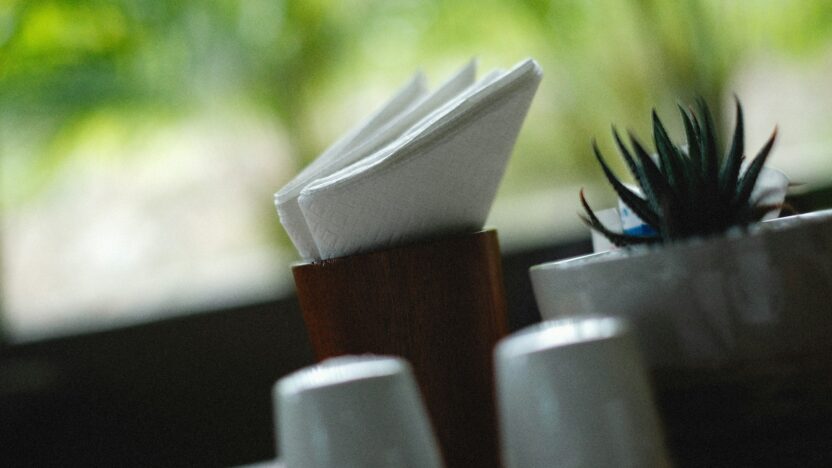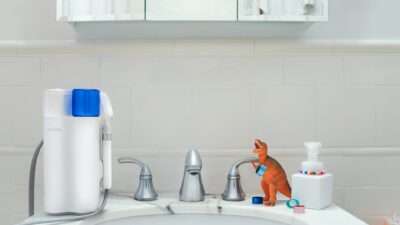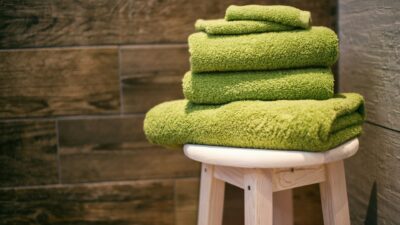Cleaning your home doesn’t have to harm the environment or your health. Traditional cleaning products often contain harsh chemicals that pollute indoor air and waterways. Green cleaning, on the other hand, uses natural, sustainable methods to keep your home spotless while protecting the planet. This article shares practical eco-friendly cleaning hacks to make your home greener, healthier, and more sustainable. Whether you’re new to green cleaning or looking to refine your routine, these tips will help you create a cleaner, more environmentally conscious home. Discover more natural living ideas at For Organic Life.
Why Choose Green Cleaning?
Green cleaning is about more than just a sparkling home. It’s about reducing your environmental footprint and creating a safer space for your family. Chemical-based cleaners can release volatile organic compounds (VOCs), which may cause respiratory issues or skin irritation. Natural cleaning solutions, like vinegar or baking soda, are non-toxic and biodegradable. They’re also cost-effective and often already in your pantry. By adopting eco-friendly cleaning hacks, you contribute to a healthier planet and a safer home environment.
Reducing Cleaning Waste with Reusable Tools
One of the easiest ways to make your cleaning routine greener is by cutting down on waste. Disposable paper towels, single-use wipes, and plastic scrubbers contribute to landfill overflow. Instead, switch to reusable tools that are just as effective and better for the environment.
Start with microfiber cloths. These durable, washable cloths trap dust and dirt without needing chemical sprays. You can use them dry for dusting or damp for scrubbing surfaces. Old cotton T-shirts or towels can also be cut into rags for cleaning windows, countertops, or appliances. For tough scrubbing, try bamboo or coconut fiber brushes instead of plastic sponges. These natural materials are biodegradable and long-lasting.
To clean reusable tools, toss them in the washing machine with a natural detergent. Avoid fabric softeners, as they can reduce absorbency. By choosing reusable tools, you’ll reduce waste and save money over time. Plus, you’ll keep your home clean without adding to the planet’s trash problem.
Time-Saving Natural Cleaning Techniques
Green cleaning doesn’t have to be time-consuming. With a few smart techniques, you can clean efficiently while staying eco-friendly. One time-saving hack is to create a natural all-purpose cleaner. Mix equal parts water and white vinegar in a reusable spray bottle, then add a few drops of essential oils like tea tree or lavender for a fresh scent. This solution works on countertops, sinks, and even glass surfaces.
Another quick tip is to tackle small messes daily to prevent buildup. Wipe down kitchen counters after cooking or sweep high-traffic areas regularly. This prevents the need for deep cleaning sessions, saving you time and effort. For stubborn stains, sprinkle baking soda on the surface, spray with your vinegar solution, and let it fizz for a few minutes before wiping. This natural reaction lifts grease and grime without harsh scrubbing.
For floors, a simple mop with hot water and a splash of castile soap works wonders. Castile soap is plant-based and biodegradable, making it a perfect green cleaning ingredient. These techniques are quick, effective, and keep your home free of harmful chemicals.
Cleaning High-Traffic Areas Sustainably
High-traffic areas like kitchens, bathrooms, and entryways need extra attention, but you can clean them sustainably. Start with your kitchen. Grease and food splatter are common, but you don’t need chemical degreasers. Sprinkle baking soda on greasy stovetops or oven racks, then wipe with a damp cloth. For stainless steel appliances, a mixture of olive oil and vinegar buffs out smudges and adds shine.
In bathrooms, tackle soap scum and mildew with a natural paste. Mix baking soda with a small amount of water to form a thick paste, then apply it to grout or tiles. Let it sit for 10 minutes, scrub with a bamboo brush, and rinse. For toilets, pour a cup of vinegar into the bowl, let it sit for an hour, then scrub with a toilet brush. This method removes stains and odors without synthetic chemicals.
Entryways often collect dirt and dust. Use a broom or a vacuum with a reusable filter to clean floors. For muddy footprints, a damp microfiber cloth with a drop of castile soap will do the trick. These sustainable methods keep high-traffic areas clean while minimizing environmental impact.
Combining Natural Cleaners for Maximum Effect
Natural cleaners are versatile, and combining them can boost their cleaning power. For example, vinegar and baking soda are a dynamic duo for tough stains. The acidic vinegar reacts with alkaline baking soda to break down grease and grime. Use this combo for clogged drains by pouring half a cup of baking soda down the drain, followed by a cup of vinegar. Let it fizz for 15 minutes, then flush with hot water.
Lemon juice is another powerful natural cleaner. Its acidity cuts through grease and leaves a fresh scent. Mix lemon juice with salt to create a scrub for cutting boards or rusty surfaces. For laundry, add a quarter cup of lemon juice to the rinse cycle to brighten whites naturally.
Essential oils like tea tree or eucalyptus add antibacterial properties to your cleaners. Add a few drops to your all-purpose spray for extra germ-fighting power. Be sure to use pure, high-quality essential oils for the best results. Combining these natural ingredients creates effective, eco-friendly solutions for every cleaning task.
Creating a Green Cleaning Routine
A consistent green cleaning routine keeps your home tidy and sustainable. Start by setting a schedule. For example, clean high-traffic areas weekly and deep-clean monthly. Make a checklist of tasks, like dusting, vacuuming, or wiping surfaces, to stay organized.
Stock your cleaning caddy with eco-friendly essentials: vinegar, baking soda, castile soap, microfiber cloths, and a reusable spray bottle. Keep these items in one place for easy access. To save time, prepare your cleaning solutions in advance. Label bottles clearly to avoid confusion.
Involve your household in the routine. Assign tasks to family members or roommates to share the workload. For example, one person can handle kitchen cleaning while another focuses on bathrooms. This makes green cleaning a team effort and reinforces sustainable habits.
Finally, stay inspired by exploring new green cleaning ideas. Visit For Organic Life for more tips on sustainable living. A consistent routine ensures your home stays clean and eco-friendly without extra effort.
Final Thoughts
Adopting eco-friendly cleaning hacks is a simple yet impactful way to care for your home and the planet. By using reusable tools, time-saving techniques, and natural cleaners, you can create a healthier living space without harming the environment. Start small, experiment with these tips, and build a green cleaning routine that works for you. Your home will be cleaner, your wallet will thank you, and the planet will benefit from your sustainable choices.




